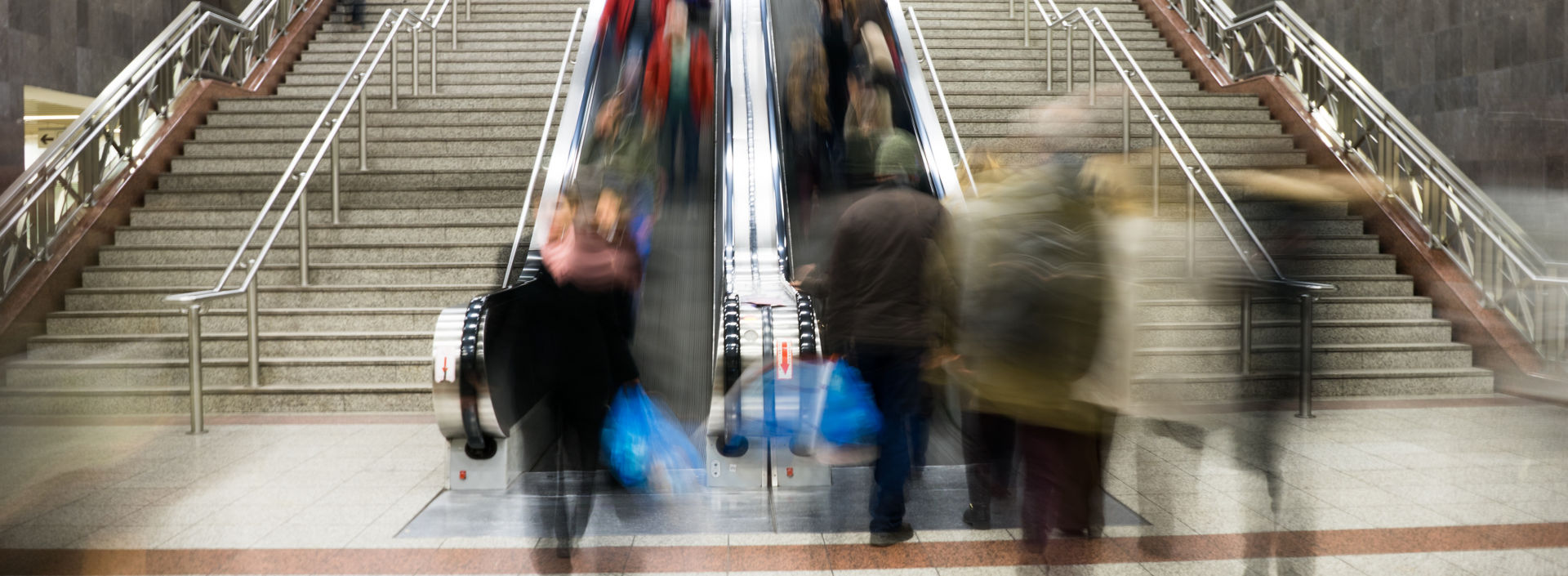Escalators are a staple of modern infrastructure, offering seamless movement between floors in malls, transit hubs, and office buildings. But a common question arises: should you walk on escalators, or are they meant solely for standing? KONE’s official stance is clear: escalators are not meant to be walked on. Let’s explore the reasons behind this recommendation, focusing on safety, design, and efficiency.
Safety First: Why Walking Is Discouraged
Walking on escalators increases the risk of accidents. Safety experts consistently advise riders to stand still, hold the handrail, and face forward. According to the North Carolina Department of Labor, adhering to these safety measures significantly reduces the likelihood of falls, trips, and collisions.
Walking disrupts balance and introduces hazards, especially when individuals carry heavy bags, wear unstable footwear, or navigate crowded spaces. Loose clothing or footwear also poses risks of entrapment in escalator mechanisms. For the safety of all passengers, standing still is the most secure way to use an escalator.
Designed for Standing, Not Walking
Escalators are not designed as moving staircases for active walking. They are engineered to transport passengers safely and efficiently at a constant speed. Walking on escalators introduces additional stress on their mechanisms, increasing wear and tear. Over time, this can lead to higher maintenance needs and potential malfunctions.
KONE escalators are built with cutting-edge technology to ensure durability and reliability. However, their optimal performance depends on passengers using them as intended: standing still and allowing the machinery to work without unnecessary strain.
Efficiency: The Benefits of Standing Still
While many believe walking speeds up travel, studies show that standing on both sides of an escalator can improve overall capacity. Transport for London’s ‘Standing Only’ Escalator Trial at Holborn Station demonstrated that a standing-only policy increased passenger capacity by 30% during peak hours. By reducing congestion and utilizing both sides of the escalator, more passengers could move through the system efficiently.
Avoid Using Non-Running Escalators as Stairways
When an escalator is not running, it may seem convenient to use it as a stairway. However, this is not recommended for a couple of reasons:
- Different Step Design: Escalator steps are deeper and taller than traditional stairs, making them less safe to climb or descend.
- Potential Hazards: A non-operational escalator may have uneven surfaces or slippery steps, increasing the risk of trips and falls.
KONE encourages passengers to use nearby stairways or elevators instead of attempting to walk on a stationary escalator. Doing so ensures safety and prevents unnecessary wear on the equipment.
KONE’s Official Recommendation
KONE recommends the following best practices for using escalators safely and efficiently:
- Stand Still: Let the escalator transport you safely.
- Hold the Handrail: Maintain balance by gripping the rail.
- Face Forward: Stay alert and avoid distractions, such as mobile devices.
- Keep Items Clear: Ensure clothing, bags, and loose items do not touch the steps or sides.
- Avoid Non-Running Escalators: Use alternative pathways for safe transit.
By following these guidelines, passengers can contribute to a safer, more reliable experience for everyone.
While walking on escalators or using non-operational ones as stairways may seem convenient, these practices pose safety risks, increase wear on equipment, and disrupt traffic flow. KONE escalators are engineered for optimal performance when riders stand still, hold the handrail, and stay attentive. For a safe and efficient journey, follow these recommendations every time you use an escalator.
KONE Escalators: Enhancing Safety and Efficiency
KONE offers a comprehensive range of escalators and moving walkways designed to meet the diverse needs of various building types, including retail centers, offices, medical facilities, airports, stadiums, and public transportation hubs. Our products are engineered for durability, eco-efficiency, and seamless integration into your building’s architecture.
Advantages of KONE Escalators
- Eco-Efficiency: Our escalators feature energy-efficient operation modes and long-lasting LED lighting, which is up to 80% more efficient than fluorescent lighting and lasts up to 10 times longer.
- Safety Enhancements: In addition to standard safety features, we offer optional enhancements such as new traffic signalization solutions, audible alarms for incorrect entry during standby operation, and optional fall-prevention barriers and extended balustrades for additional passenger protection.
- Innovative Design: KONE provides a wide range of design options, including attractive lighting solutions that improve passenger guidance and safety, allowing you to create stunning visual effects that perfectly match your building’s architecture.
- Advanced Connectivity: Our escalators are equipped with KONE 24/7 Connected Services, offering continuous monitoring to predict and address issues before they occur, ensuring full transparency into maintenance activities.
Enhance the safety, efficiency, and aesthetic appeal of your building with KONE’s state-of-the-art escalator solutions. Contact us today to learn how our innovative products can be tailored to meet your specific needs.



















